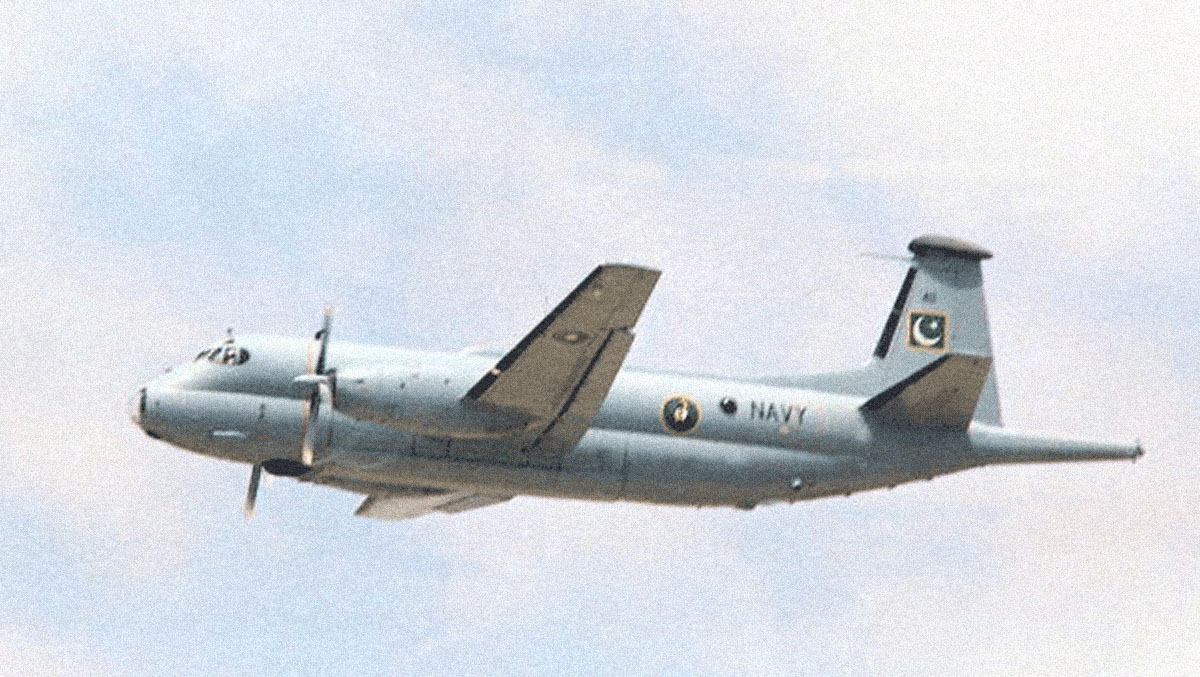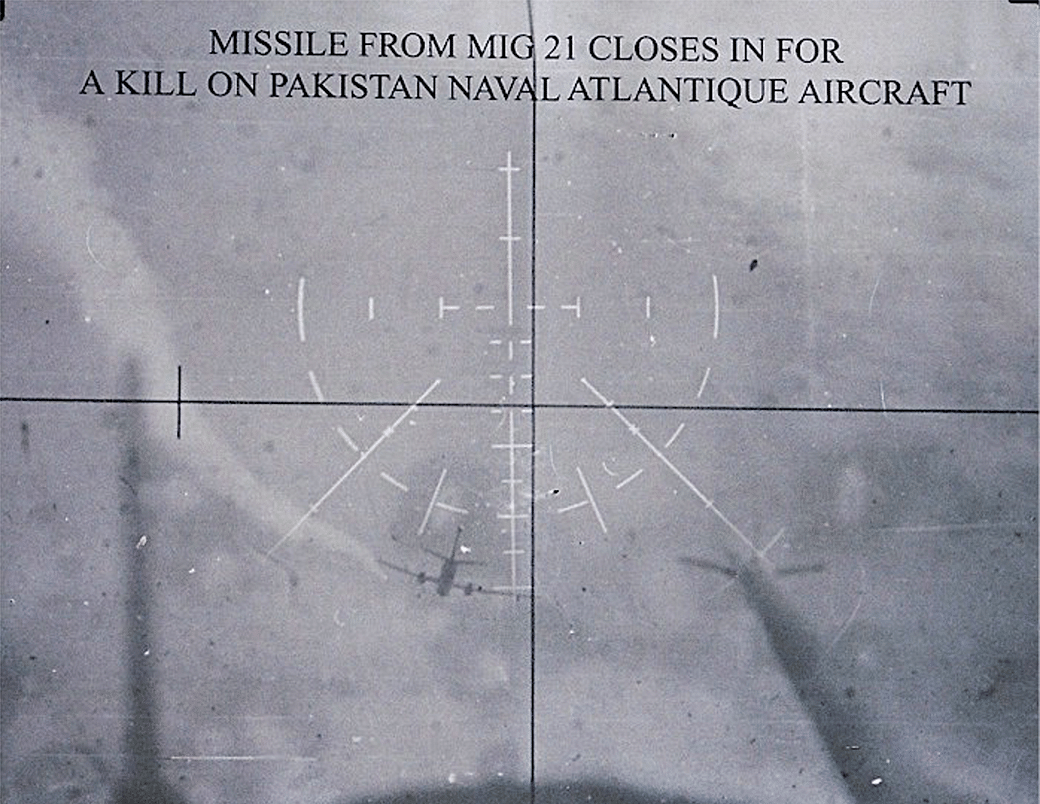Earlier this week, a Russian S-400 Triumf radar locked on a French Atlantique-2 as it flew over the Baltic Sea, sparking another controversy in an already tense region. The incident brought back memories of when a French Atlantique aircraft was shot down by a Russian-origin MiG-21 Bison twenty-six years ago.
Tasked with keeping an eye on maritime activity near Baltic states, the French maritime patrol aircraft (MPA) was on a roughly five-hour reconnaissance flight when it was engaged by the Russian radar. France has since decried that the aircraft was subjected to “attempted jamming” and “illumination” by a fire-control radar.
France’s Minister of the Armed Forces, Sébastien Lecornu, said in a statement on the social media site X: “On Wednesday night, a French Atlantique 2 maritime patrol aircraft (MPA) was the target of Russian intimidation.”
Elaborating on the engagement, he added, “It was patrolling in international airspace over the Baltic Sea as part of a NATO operation and was illuminated by the fire-control radar of an S-400 ground-based air defense system. This aggressive Russian action is unacceptable. Our armed forces will continue to act to defend freedom of navigation in international air and sea spaces.”
The Atlantique-2 and other NATO maritime patrol and surveillance aircraft regularly operate in the Baltic, monitoring Russian air and naval movements and activities on the ground in Kaliningrad, which is positioned between NATO members Poland and Lithuania.
Though several NATO aircraft have been involved in similar encounters in the past, the latest incident is particularly significant as it comes at a time when tensions are already high in the Baltic.

The incident has been described by the French Armed Forces as an “act of aggression,” with observers cautioning that a miscalculation could lead to escalation. Colonel Guillaume Vernet, spokesperson for the French Armed Forces, said, “The use of radar to ‘illuminate’ our aircraft in international waters is an aggressive act,” adding that such actions “are not exceptional in this area” and “means that Russia is not staying passive.”
The French military said that although Russia’s actions are considered provocative, Moscow probably decided against escalating further because of the dangers of striking a NATO aircraft. Vernet continued, “An attack on a NATO aircraft can cause a sudden and serious escalation with NATO.”
Although a major tragedy was averted, the incident is oddly reminiscent of the 1999 shootdown of a French-origin maritime patrol aircraft—the Atlantique (predecessor of the Atlantique-2 locked in by S-400)— by a Russian-origin MiG-21 fighter jet.
When MiG-21 Shot Down The Atlantique
This story goes back twenty-six years to August 1999, a month after the Kargil War was fought between bitter enemies India and Pakistan in 1999. At the time, the MiG-21 was one of the leading aircraft of the Indian Air Force.
The MiG-21 became the first supersonic fighter jet to be inducted into the Indian Air Force in 1964. Throughout its operational service, the MiG-21 demonstrated its supremacy against threats posed by adversaries. India is believed to have acquired more than 800 MiG-21s since the 1960s.
Later, in the 1980s and 1990s, the upgraded aircraft variants served as the IAF fleet’s backbone and eventually became the longest-serving fighter in the IAF’s inventory.
When the Kargil War broke out in 1999, the Indian Air Force was tasked with operating in tandem with the ground troops. The IAF began its “Operation Safed Sagar” in May 1999 and immediately deployed its MiG-21BIS T-75 and the MiG-21 T-96 to attack Pakistani positions and support the Indian Army.
These aircraft carried out high-altitude rocket and bomb attacks against intruding Pakistan Army forces and conducted escort and combat air patrol (CAP) missions over the battlefield.
The conflict eventually ended in July 1999.

Less than a month later, a Pakistan-operated Atlantique aircraft (called flight Atlantic-91) entered the Indian airspace. The aircraft was a long-range maritime patrol aircraft operated by the Pakistani Naval Arm. It was capable of conducting anti-submarine operations and ground-attack missions, for which it carried air-to-surface missiles.
The IAF was wary of any illegal activity by Islamabad and its military, especially as barely a month had passed since the illegal intrusion by Pakistani troops that led to the Kargil war.
At exactly 10:51 a.m. on August 10, 1999, the IAF ground radars picked up an aircraft on a particular flight path close to Badin, near Pakistan’s Sindh province. Badin is located close to the international border (IB) between India and Pakistan.
Incidentally, the aircraft was moving gradually toward the Indian-Pakistan border, its trajectory set in a south-easterly direction. The IAF’s ground radar sensors watched the aircraft as it approached the border region.
What was to come next would change the destiny of the Pakistani patrol aircraft. The Atlantic-91 breached the Indian airspace and entered the Kutch region of Gujarat. The airspace intrusion essentially violated the 1991 air agreement between India and Pakistan, which clearly stipulated that all aircraft (excluding helicopters) from both countries must maintain a minimum distance of 10 kilometers from the border.
In response, the IAF scrambled its MiG-21 from the Naliya airbase in Kutch, and the aircraft was up in the air by 10:59 am.

One of these jets was piloted by Squadron Leader Prashant Bundela. The IAF pilot approached the intruder aircraft and got close enough to confirm the aircraft’s identity visually. The intruder aircraft was identified as a French-built Atlantique bearing the insignia of the Pakistan Navy.
As directed by ground control, Squadron Leader Bundela flew alongside the Pakistani Navy plane, instructing its pilots to follow him and land immediately. However, the Atlantic-91 defied the orders and purportedly carried out threatening maneuvers, turning toward Squadron Leader Bundela’s MiG-21.
Since the Atlantic-91 had violated the agreement in place and breached the Indian airspace, it was considered a hostile aircraft. Acting against repeated orders from the IAF also did not help its case. The aircraft was considered to be hostile and could not be allowed to return to its point of origin.
So, the Atlantic-91, like any other intruding aircraft, had two choices: either follow the instructions and land or risk being shot down. The aircraft, however, chose not to follow the instructions and fly towards the border to escape into the Pakistani territory.
By now, Squadron Leader Bundela was permitted to engage in combat. He exercised his only option and fired an R-60 air-to-air missile at the Atlantic-91 when the aircraft was merely five kilometers away from the International Border. The missile hit the left engine of the aircraft, and it was only a matter of time before the aircraft went down into flames.

After being shot down, the wreckage of the Atlantique entered a spiral descent above the Kori Creek area. Some parts of the wreckage fell approximately 5 kilometers inside Pakistani territory. All 16 Pakistani personnel onboard were killed.
Pakistan later claimed that the aircraft was on an innocuous patrol mission, backed by an argument that it was unarmed.
However, India retorted by questioning the proximity of the training mission near the international border, underlining that every country typically conducts training activities within designated areas well within their territory.
Additionally, Indian officials contended that the Atlantique’s main operational area is over the ocean, implying that a training trip inside foreign territory was not a normal training exercise but rather a possible surveillance mission.
Pakistan later sued India in the International Court of Justice on September 21, 1999, requesting restitution of almost US$60 million. However, the lawsuit was dismissed by India on the grounds that the court did not have jurisdiction. The court subsequently accepted this in a ruling in June 2000. The verdict came as a big blow to Pakistan.
The episode led to MiG-21 being positioned as the hero of the IAF. The men piloting these jets were lauded for their exceptional performance in thwarting what was considered an obvious security threat at the time. On October 8, 2000, Squadron Leader Bundela—who subsequently became Wing Commander—was awarded the esteemed Vayu Sena Medal in recognition of his valor.
- Contact the author at sakshi.tiwari9555 (at) gmail.com
- Follow EurAsian Times on Google News




